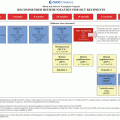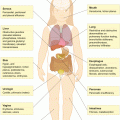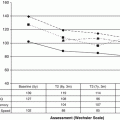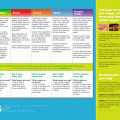Age of student/school environment
Age 0–2
Age 3–7
Age 6–12
Age 11–16
Age 15–25
Infancy
Preschool and beginning elementary
Elementary school
Middle school and early high school
High school and emerging adulthood
Psychosocial development
Trust vs. mistrust
Initiative vs. guilt
Industry vs. inferiority
Identity vs. role confusion
Intimacy vs. isolation
Autonomy vs. shame
• Count on adults for safety and comfort
• Develop sense of physical control and independence from others
• Find a sense of purpose
• Experience control over environment
• Initiate activities and exploration
• Find sense of competence through practice
• Like to show skills to adults
• Find direction in personal endeavors
• Decide how to define self
• Work to identify future roles
• Find friendship and love
• Practice building long-term relationships
Cognitive development
Sensory
Preoperational
Concrete operations
Formal operations
• Learn by touching, tasting, hearing, smelling
• Develop object permanence
• Integrate sensory and motor functions
• Begin symbolic thinking, make-believe play
• Language development
• Remain egocentric
• Develop understanding of conservation
• Develop ability to classify
• Can do mental operations with concrete concepts
• Begin to use generalizations but need many specific examples
• Develop abstract thinking
• Ability to take perspective of others
• Can imagine future and consider plans
• Hypothetical thinking
Neurocognitive brain development
Gross motor skills
Regulation of attention and emotion
Progression of cognitive abilities
• Expressive/receptive language
• Verbal memory
• Fine motor skills
• Visual memory
• Visual processing
• Visual-spatial skills
• Visual-motor control
• Organization and planning
• Processing speed for visual and auditory information
• Increased storage capacity and retrieval abilities
22.5 Academic Motivation
The self-processes model of human motivation [36–39] and the self-determination theory of motivation [40–43] both implicate basic human needs as the impetus for motivated behaviors. The basic psychological needs of competence, relatedness, and autonomy, and the level at which those needs are satisfied or frustrated for an individual, drive motivated behaviors and lead to a state of well-being [37, 41–43]. The needs are innate and are important at each stage of development [36, 43]. Competence [43] has been defined as “feeling effective in one’s ongoing interactions with the social environment and experiencing opportunities to exercise and express one’s capacities … not an attained skill or capability, but rather a felt sense of confidence and effectance in action” (p. 7). Relatedness [43] is “feeling connected to others, to caring for and being cared for by those others, to having a sense of belongingness both with other individuals and with one’s community … tendency to connect with and be integral to and accepted by others” (p. 7) and, in the context of academic and vocational outcomes, will be reviewed here as school belonging. Autonomy [43] is defined as “being the perceived origin or source of one’s own behavior … acting from interest and integrated values” (p. 8). Basic needs are addressed and served in the social context and are developed in relationships with others. The level of support for the needs in the social environment will promote either engagement in valued activities or disaffection and lack of motivated behaviors [37, 38, 41, 43, 44].
As students, children and adolescents need experiences with competence, relatedness, and autonomy in order to nurture a self-directed level of motivation for social development and academic achievement [40–44]. It is also helpful to keep in mind that needs can sometimes compete with one another and compromise an individual’s well being in doing so [45]. An example might be that a person’s need for competence could lead to such driven behavior that relationships are ignored and the need for relatedness would suffer.
The self-processes model of motivated behavior includes basic needs for autonomy, belonging, and competence as they impact engagement or disaffection in the social milieu [38, 46–50]. Furrer and Skinner [48] define engagement as “active, goal-directed, flexible, constructive, persistent, focused interactions with the social and physical environments” and disaffection as “alienated, apathetic, rebellious, frightened, or burned out” (p. 149). Engagement or disaffection can serve as a mediator between the satisfaction of a student’s basic needs and academic motivation [46, 48–51]. Academic motivation then leads to more positive outcomes for the student. Skinner et al. [50] suggest that the self-system processes of competence, belonging, and autonomy are facilitators of the engagement process, and not internal indicators of the product (engagement or disaffection). They found that autonomy, competence, and relatedness mediate the pathway between contextual factors of school, including relationships with teachers and peers, and engagement or disaffection.
Newmann and colleagues [49] describe educational engagement as a product of school membership and authentic work opportunities, both of which promote satisfaction of an individual’s need for competence and relatedness. School membership “develops when students establish affective, cognitive, and behavioral connections to the institution” (p. 20) and is most likely to develop when students feel a sense of clear purpose, fairness, and personal support. Authentic work is that which is “considered meaningful, valuable, significant, and worthy of one’s effort, in contrast to those considered nonsensical, useless, contrived, trivial, and therefore unworthy of effort” (p. 23). When a student experiences both membership and authenticity in the school environment they are more likely to become engaged in the world of school and value the outcomes promoted by the school environment. Engagement leads to the motivation and investment that is necessary to persist and be successful with academic endeavors.
Finn [46, 52] developed a model of engagement that involves a process of participation and identification. The participation component can be considered the level of belonging experienced by a student. Once the student becomes an active participant in the school environment, both behaviorally and emotionally, they are more likely to become engaged and begin to identify with the values and expectations of the school setting. If the student does not perceive themselves as belonging to the school environment, they are more likely to begin the process of withdrawal—either emotionally, or more literally, by dropping out of school. There are two components to the state of identification with school. Finn [46] states: “First, students who identify with school have an internalized conception of belongingness—that they are discernibly part of the school environment and that school constitutes an important part of their own experience. And second, these individuals value success in school-relevant goals” (p. 123). Relatedness or belonging is important to that sense of being a part of the school community.
Self-determination theory of motivation assumes humans actively seek to define their sense of self and to meet basic psychological needs through challenging, interesting, and accomplished experiences [40–43]. The theory is presented as a dynamic interaction between individual and environment with the primary force of motivation being the basic human psychological needs of competence, relatedness, and autonomy. Satisfaction of the basic needs comes from interpretation of contextual or environmental factors by the individual, and level of need satisfaction can lead to support for or interference with an individual’s motivation, performance, and well-being. One’s environment offers opportunities for personal growth or thwarting of development, and the person’s level of self-regulation and interaction contributes to the benefit or deficit garnered from the environmental context.
22.6 Competence
Competence involves feelings of effectiveness, self-efficacy, or confidence in one’s efforts to intentionally impact the environment [45, 53, 54]. The need is innate and the feelings develop over time, within a variety of contexts and relationships, and they contribute to both social and cognitive development [45, 53, 55]. The concept of competence has also been discussed as self-efficacy or personal agency [56], a mechanism involving “people’s beliefs about their capabilities to exercise control over their own level of functioning and over events that affect their lives. Efficacy beliefs influence how people feel, think, motivate themselves, and behave” (p. 118). Efficacy beliefs [56] also “influence aspirations and strength of goal commitments, level of motivation and perseverance in the face of difficulties and setbacks, resilience to adversity, quality of analytic thinking, causal attributions for successes and failures and vulnerability to stress and depression” (p. 1206). When an individual does not develop a strong sense of competence or self-efficacy, there is a higher risk of experiencing anxiety, depression, or withdrawal from the environment [53, 56, 57]. High levels of competence or efficacy have been linked to internalized levels of motivation, engagement, and academic achievement [39, 44, 53, 56, 57].
Competence can also be conceived as the sense of “perceived control,” the ability of the individual to impact the environment and achieve a desired outcome [39, 57, 58]. Perceived control involves three different sets of beliefs [39, 57]. Control beliefs are those about whether one can influence successes rather than failures. Strategy beliefs are those about whether there are effective strategies to create desired outcomes. Capacity beliefs are those about whether or not the individual has the capacity to implement the strategies that might be successful in the given situation. Higher levels of perceived control promote engagement, which can then lead to achievement of goals. Perceived control is influenced by social relationships and by environmental contexts.
An individual’s beliefs about controllability may influence the degree of effort expended to master a skill or change an environment versus a decision to tolerate an adverse situation [59]. Perceptions about controllability change with development; children develop the ability to differentiate chance or luck from skill and ability by the age of 11–13 years [59]. By then, children have a greater ability to use problem-focused coping with efforts to manage or master an element of the environment seen as stressful.
22.7 Relatedness and School Belonging
Belonging has been defined as a basic human need, important for optimal functioning [60–63]. People need to have an integrated and reciprocal relationship with others in the community. A child’s primary community outside the family is school. School environments with characteristics such as high academic standards, high levels of teacher support, a community where relationships between students and adults are caring and respectful, and school safety have been identified as promoting school connectedness for students [62, 64, 65]. Connectedness is important for students of all ages [63, 66–68]. Many benefits of school belonging for student success have been noted, including social, behavioral, and academic [61, 62, 64, 65, 69]. When children feel as though they belong they are able to pull from a stronger set of inner resources, perceiving themselves as more competent. They may also suffer when they anticipate isolation by experiencing decrements in reasoning and thought processing [70].
Teacher-student relationships have been shown to have a clear impact on positive school belonging for students [61–63, 71–76]. Teachers can impact their students through caring, treating the students fairly, providing specific support, and actively engaging them in learning. Libbey [62] noted, “student relationships with their school often were operationalized as their relationship with their teachers” (p. 281). Goodenow [61] noted that teacher support explained over one-third of students’ assessment of value and interest related to their academic work.
Pedagogical caring [71, 77, 78] is a concept that involves the ways that students perceive care from their teachers. Behaviors of teachers that suggest pedagogical caring include modeling caring behaviors, democratic communication style, treating students as individuals, structure and expectations, and a nurturing manner. When students feel cared for by their teachers, they are more likely to be academically motivated, experiencing autonomy and competence, and pursuing prosocial goals [71, 78].
Wentzel [76] looked at the impact of support from peers, parents/family, and teachers. She found that, while each component of the adolescent’s environment provides some support for academic success, it was perceived teacher support that provided the most impact for classroom functioning and interest in class. Others have also come to the conclusion that supportive relationships between teachers and students influence children’s social, emotional, and academic adjustment and achievement [73, 75]. However, Rosenfeld et al. [75] found that, although perceived teacher support was a necessary condition for success, it was not sufficient on its own—partnerships with parents, other teachers, peers, and other members of the students’ environment were also important.
22.8 Autonomy
Autonomy involves a perception of being responsible for one’s own actions and choices and the perceived ability to act from one’s own interests or values. Autonomy is not the opposite of independence, but rather, it is the opposite of coercion and its development requires support in the social environment [38, 42]. Individuals seek to be the origin of their own behavior rather than a pawn to external forces that cannot be controlled [38, 79]. Autonomy is related to the concept of “locus of causality,” with self-regulation more related to an internal locus of causality—when the reasons for acting come from within the individual [36, 80].
Parent support for autonomy through the use of an authoritative parenting style, including qualities of firm control and psychological autonomy, has been found to promote self-reliance and independence in children [81]. Grolnick & Ryan [81] define parental autonomy support as the “degree to which parents value and use techniques which encourage independent problem solving, choice, and participation in decisions versus externally dictating outcomes and motivating achievement through punitive disciplinary techniques, press, or controlling rewards” (p. 144).
The importance of competence, relatedness, and autonomy in stressful conditions (i.e. serious or chronic illness) may be especially important. Children with chronic illness are often absent from school, experience significant pain, or have low levels of energy; these issues are likely to create a sense of isolation and academic struggle [13, 82, 83]. The effects of chronicity and absenteeism over time can have cumulative effects and can lead to consequences such as difficulty completing school work and keeping up with assignments, weaker relationships with teachers, and lower levels of academic success [82]. Ross [10] summarized the impact by concluding “serious illness threatens the child’s self-confidence, interrupts school attendance, interferes with developing social and academic skills, and disrupts important relationships with other children and adults” (p. 84).
Perceptions of competence, belonging, and autonomy can all be altered by the experience with a serious medical condition. Competence is developed by many opportunities to practice and explore options to solve everyday situations of life. The absence from school and missed opportunity for other typical interactions can also make it difficult for a child to develop a strong sense of being able to impact the world around them. Svavorsdottir [84] found children with chronic illnesses reported lower school connectedness and lower positive feelings about their school than did their healthy peers. The lack of control that accompanies any treatment regimen of pediatric cancer can impact a child’s sense of autonomy. Adults regularly demand certain behaviors, including submission to painful procedures and restriction of activity. Side effects of treatment such as fatigue and malaise also curtail a child’s ability to act on their own desires or goals.
Feelings of autonomy may function as a protective source of energy during times of stress or distress, as the sense of autonomy may counteract the inherent feelings of helplessness that can accompany difficult life events [38]. The social context can provide feedback to frame a stressful event as a challenge or a threat. Autonomy support may help the individual cope with both the chaos (loss of control) and coercion (loss of choice) in ways that lead to better adjustments [38].
A motivational model of stress and coping [38] suggests that stressful situations or contexts can threaten an individual’s ability to meet psychological needs. The appraisal of any given stressful situation will elicit certain ways of acting in an effort to meet one’s basic needs. Children and adolescents undergoing such stress may have a need for more deliberate activities that promote competence, relatedness, and autonomy. The long-term impact of the stress of managing a life-threatening illness on academic motivation should be an area of assessment by caregivers and educators so interventions can be implemented as needed.
22.9 Health Impact on Academic Outcomes
When any part of the body is exposed to the consequences of disease or chronic illness, it is possible that other parts of the body, including the brain, may be affected [85]. The disease process itself, the necessary treatment, or psychosocial and coping capacity may all impact the total outcome. Children with chronic illness have consistently demonstrated lower levels of academic or vocational achievement, even when global IQ scores are similar to those of healthy peers [15, 85–90]. These children also experience lower educational trajectories and lower socioeconomic status in adulthood [89]. There is some evidence that children with chronic medical conditions reach developmental milestones later than their healthy peers [91] and are less likely to complete high school on time [87]. Children with chronic medical conditions have also been noted to have higher levels of behavioral and emotional problems than their healthy peers, with decreased peer interactions and increased dependence on adults [91–94].
Effects of health on academic performance may be directly related to cognitive impact of disease and treatment or a result of indirect factors [7, 95]. Factors that can directly affect academic outcomes include fatigue, pain, and cognitive changes that result from the disease and treatment. Indirect effects arise via school attendance patterns and related missed instructional time, alterations of teacher and parental expectations for academic achievement, or other psychosocial adjustment issues such as the development of school phobia or separation anxiety [88, 90, 95, 96].
Academic struggles can occur acutely as a result of disease symptoms and treatment side effects or they can emerge later, when the child reaches an age at which affected skills would be expected to emerge developmentally [15, 18]. Acute interference with academic progress is often a result of pain, fatigue, lethargy, general malaise, or medication side effects [7, 83, 97]. When cognitive effects of disease and treatment appear over time, they do not represent deterioration of previously accomplished milestones, but rather are a result of impact on the rate of brain growth and development of complex structures within the brain [12, 18, 22, 98]. Neurocognitive sequelae can include impact on cognitive ability, attention, processing speed, memory, visual-motor integration, school performance, social interactions, and adaptive behaviors [18, 92, 93, 97, 99, 100]. The neurocognitive deficits can interfere not only with academic progress, but also with development of competence and social skills [100]. They can be observed by parents and teachers in the classroom as failure to compete work, slowness with approaching and accomplishing work, periods of inattention, fine motor deficits, or difficulty with development and maintenance of peer relationships [5, 19].
Maslow and colleagues [90] identified school connectedness as a protective factor related to academic attainment for students with chronic illness. Social isolation can be a greater concern for students with medical conditions and it may be that lack of connectedness is related to lost opportunities for development of competence and social relationships. Peer interaction and teacher-student relationships may be especially important for students with chronic illness, as they can foster a sense of school belonging just as they do for healthy, typical students [10, 101–103].
22.10 Academic Impact of Childhood Cancer and Treatment
School absence, pain, and fatigue that accompany the intense treatment of any pediatric cancer can impact both academic and social outcomes in the short term [7, 20], and cognitive late effects add to the impact as they emerge over time. Some childhood cancer diagnoses and treatment regimens create a higher risk of cognitive difficulties than others [9, 12, 17, 19, 22, 104]. The diagnoses found to have the highest risk of cognitive late effects, and consequently, interference with academic progress and psychosocial skills, are those that involve the brain or central nervous system (CNS). This group includes children diagnosed with brain and spinal tumors and those diagnosed and treated for acute lymphoblastic leukemia (ALL). Treatment for brain tumors can include a combination of surgery, chemotherapy, and radiation to the brain and spine [105]. Acute leukemia and lymphoma treatment regimens involve intrathecal chemotherapy (medication delivered directly into the spinal fluid) and high dose chemotherapies that can cause cognitive late effects [9, 17, 85]. Children with high-risk leukemia or disease that has spread to the CNS are also likely to receive craniospinal radiation therapy as a part of their treatment regimen [17, 20]. Other, more rare, diagnoses also involve treatment regimens that include high doses of chemotherapy or radiation to the neck and head [98].
Stay updated, free articles. Join our Telegram channel

Full access? Get Clinical Tree







